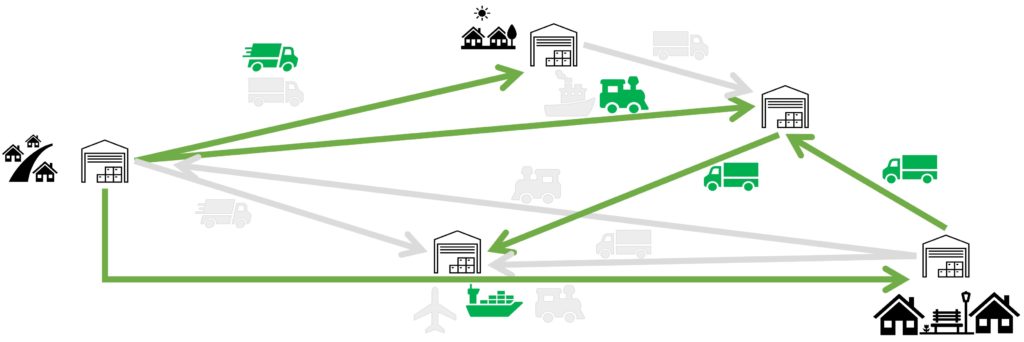
Service Network Design (SND) aims to support the tactical planning of consolidation-based carriers. These carriers combine and dispatch multiple shipments within the same vehicle or convoy (e.g., a truck, a container ship, or a freight train), with each shipment potentially originating from a different customer. Postal and small-package transportation companies, less-than-truckload motor carriers, railroads, maritime liner navigation companies perform similar services for freight.
The objective of SND is to make a set of decisions to efficiently, profitably, and in accordance with the agreed-upon quality standards, plan the activities and resource operations in order to satisfy an estimated demand of transportation. This involves determining which services to activate and how to route the demand to destinations using the selected services. Typically, SND is formulated using a time-space network, which is a graph structure that incorporates both temporal and spatial information relevant to the application built upon a time horizon discretization.
Presently, research is primarily focused on exploring alternative methods to formulate the problem by proposing a new continuous-time formulation, in order to address some of the drawbacks associated with the traditional time-space network formulation. Additionally, the integration of stochastic elements into the formulation is under investigation.
The research is supported by Project PNRR Centro Nazionale 4 “Mobilità sostenibile”, Spoke 10 “Logistica merci” within the activities of the Work Package WP5-FaaS (Freight as a service).
